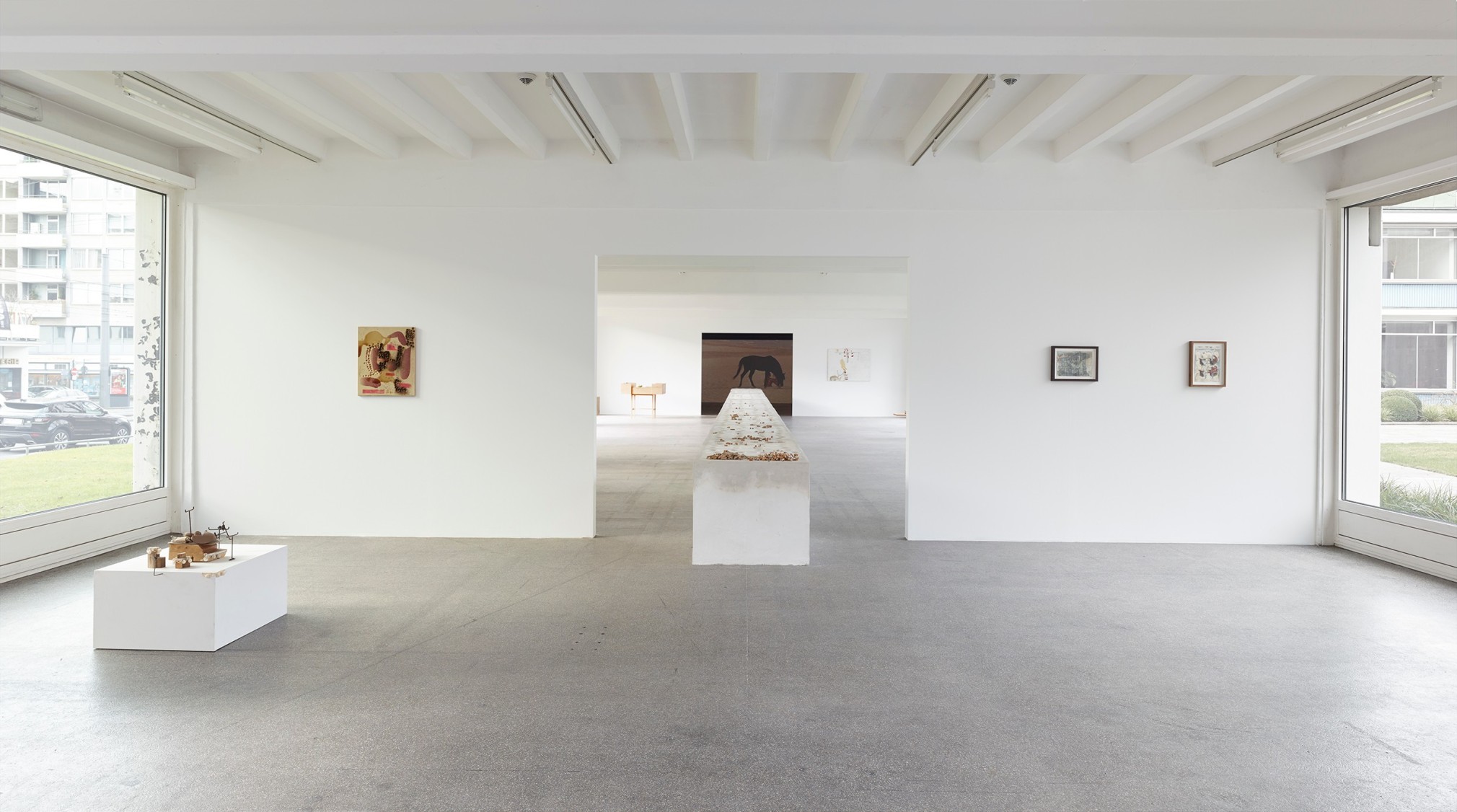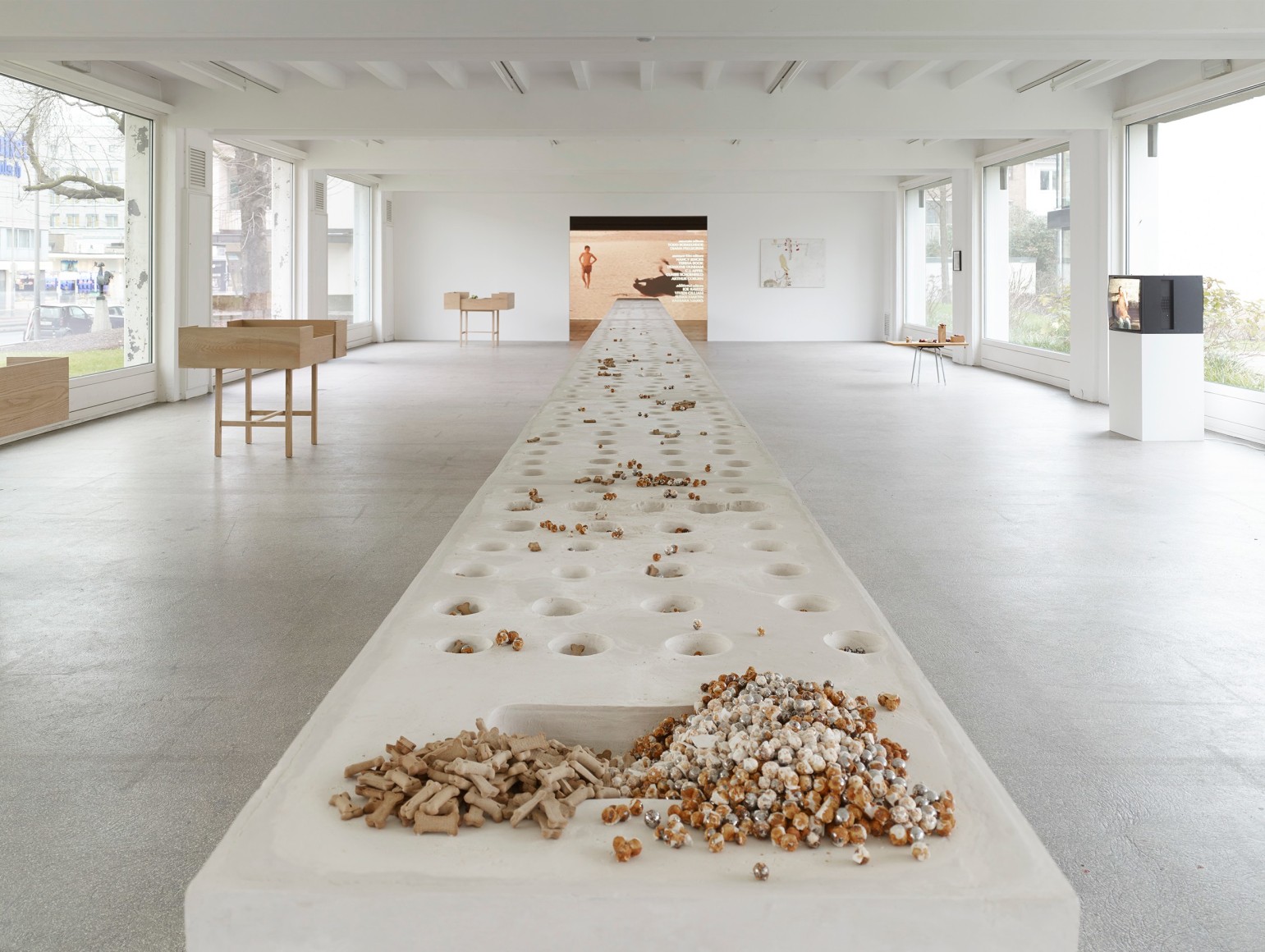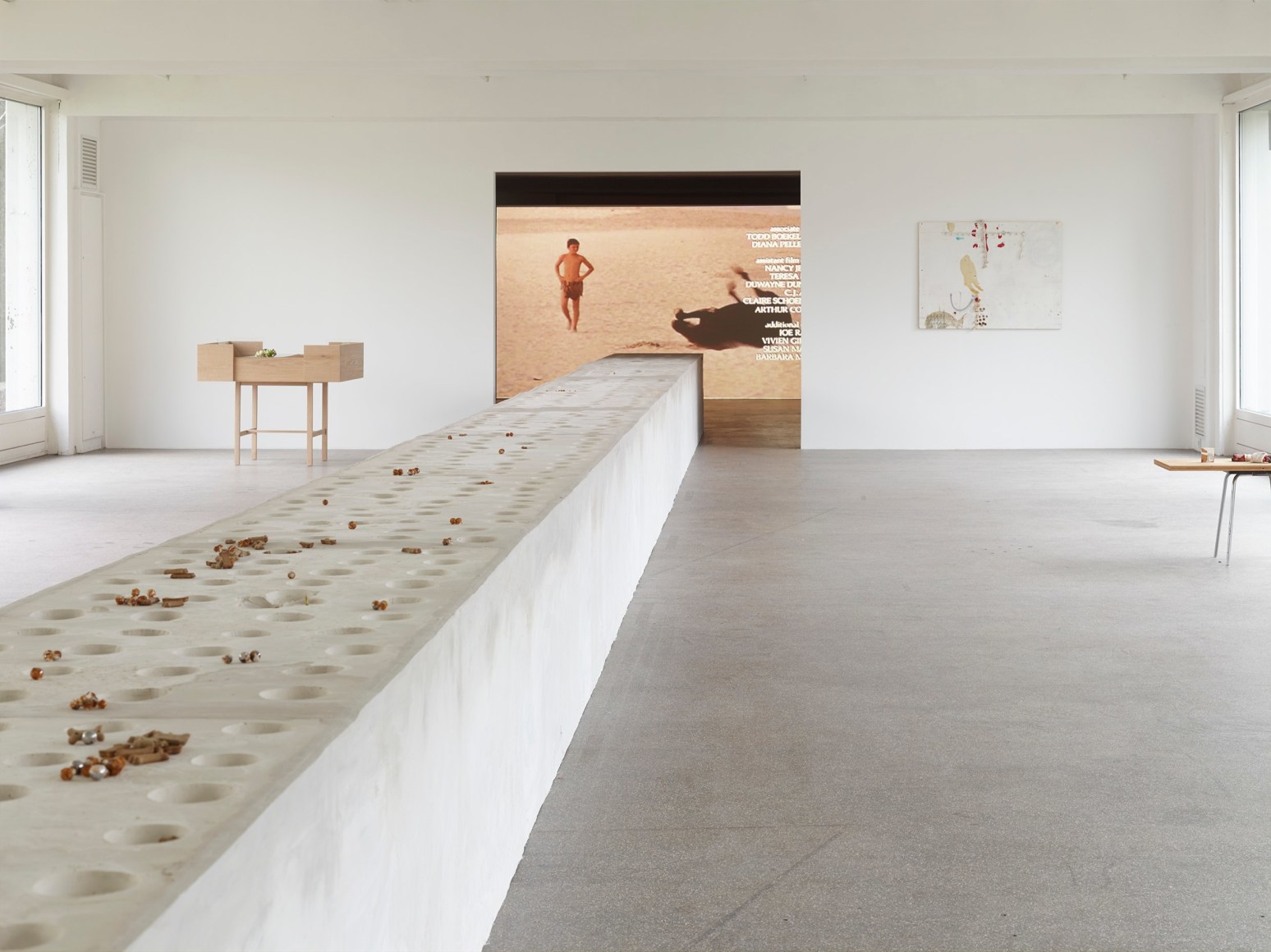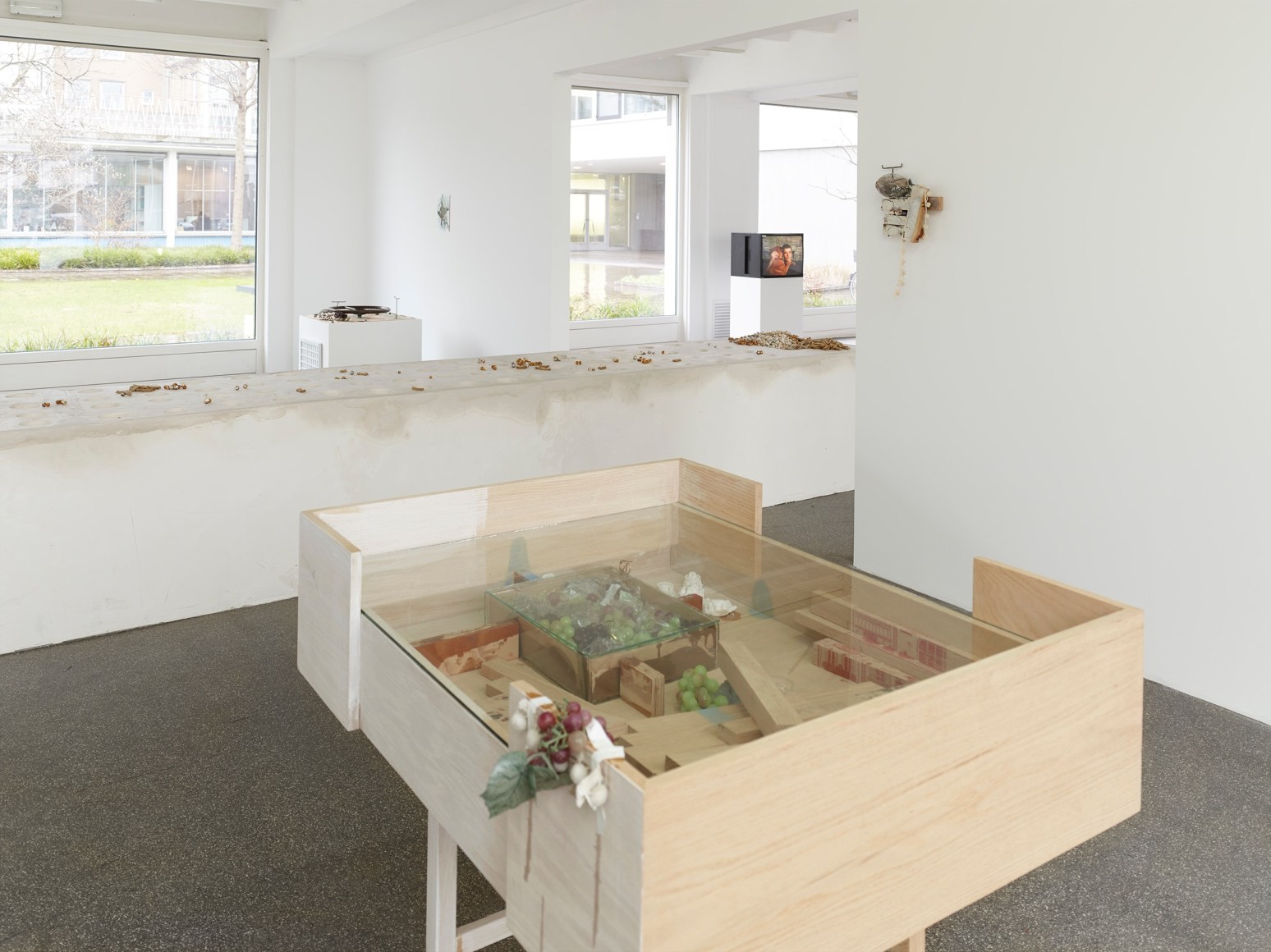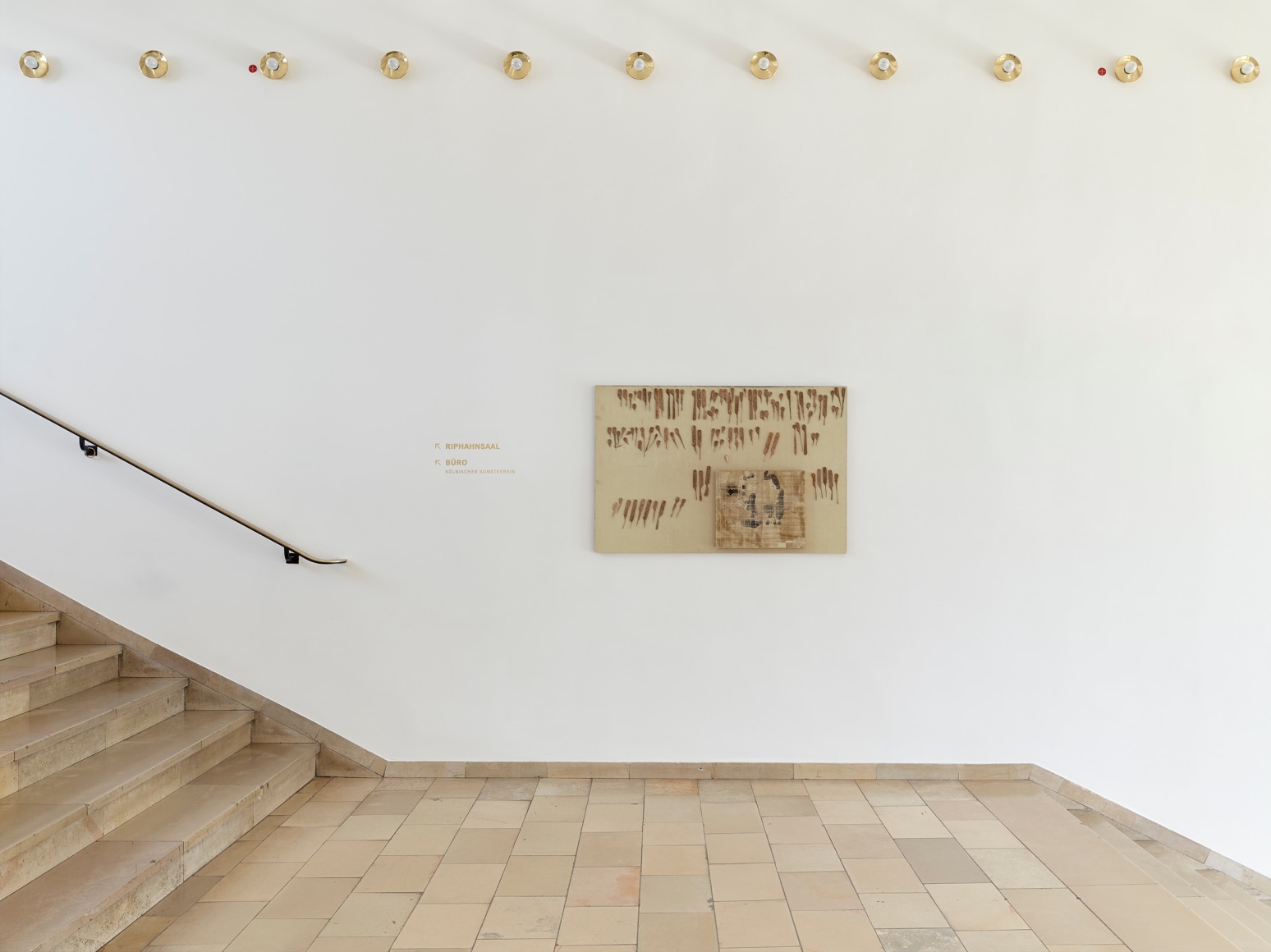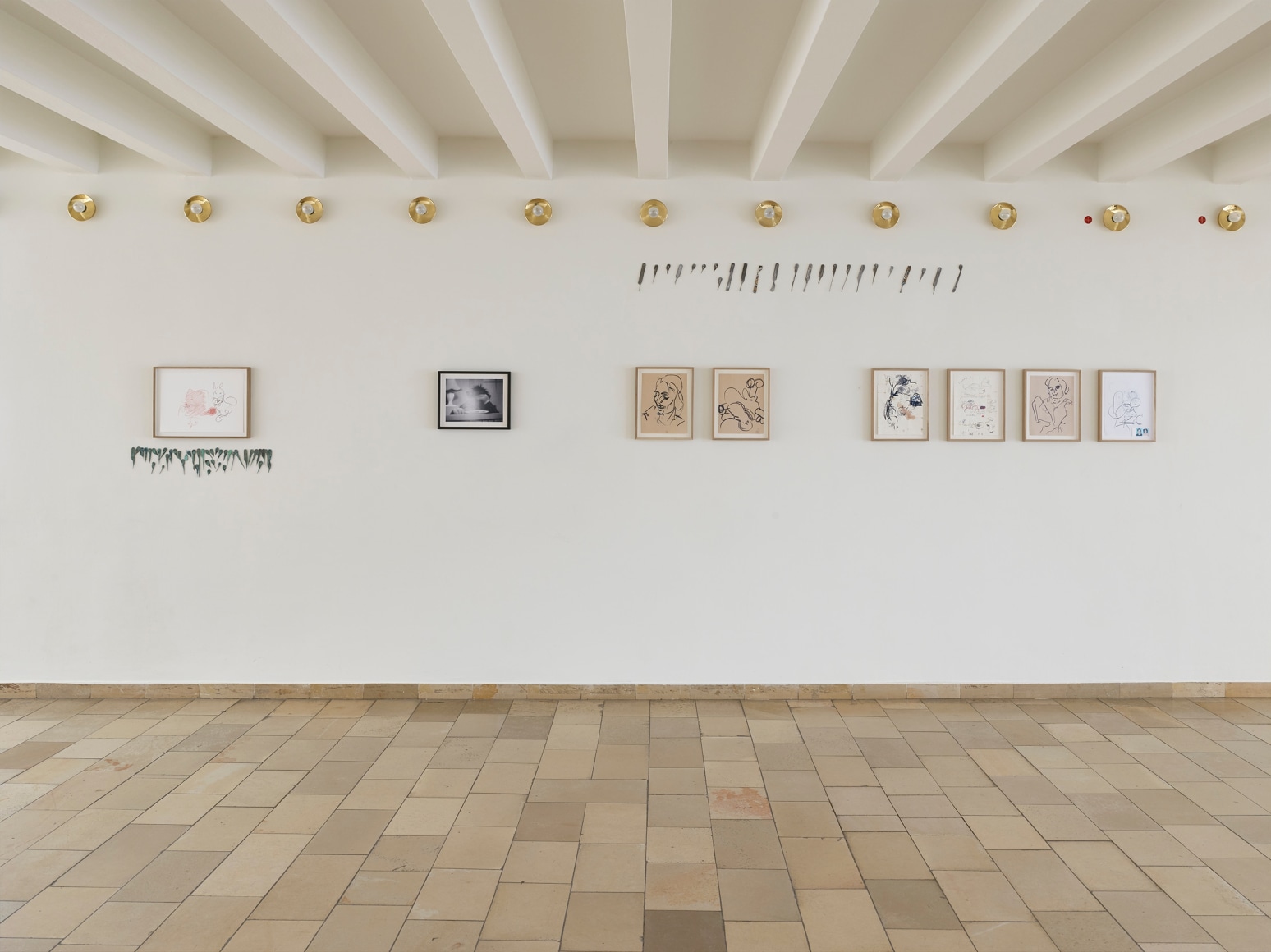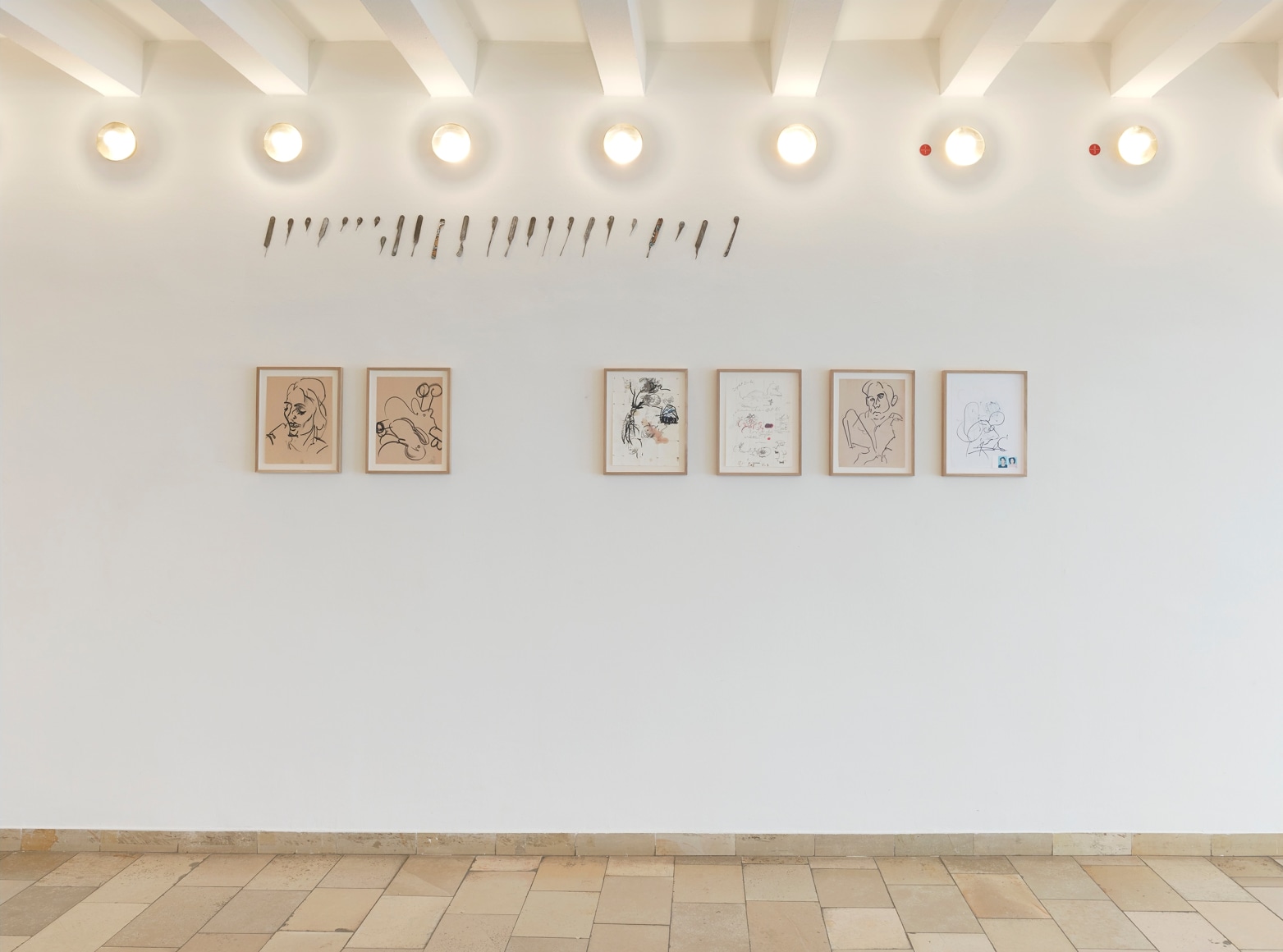The Kölnischer Kunstverein is pleased to present Mice, the first comprehensive solo exhibition of Uri Aran in Germany. In his sculptures, paintings, drawings, films and photographs, the artist, who was born in Jerusalem in 1977 and now lives in New York, investigates the fundamentals of language, communication and perception, the conditions of social interaction as well as the social rules necessary for this. The basis of the works are mostly simple materials, signs, forms, images and gestures, which Aran relates to each other in such a way that new contexts of meaning emerge. The constellations create the impression of being part of a narrative, without, however, being able to trace a clear narrative.
The exhibition at the Kölnischer Kunstverein brings together older works as well as works produced specifically for the institution and thus offers the opportunity for an intensive examination of the various facets of Aran’s work. One of the main works in the presentation is the sculpture Game (2016) installed in the large exhibition hall, which formally refers to ancient board games. The upper side of the work, made of plaster, is structured by round indentations, occasionally referring to fruit and vegetables, in which metal balls, nuts and dog biscuits can be arranged in different ways. In addition to examining the question of what criteria can be used to systematize and organize the various elements, the almost monumental-looking work reflects the idea of integrating the recipient into the work, as well as the aspect of the changeability of a sculpture.
In contrast, Arans’ cinematic works, which flank Game in the central exhibition hall on the one hand and occupy the cinema of the Kölnischer Kunstverein on the other, allow us to understand his preoccupation with the emotional world of the recipient. A central interest here is the question of how an auditory or visual stimulus is formed and sent to evoke a certain emotional reaction. An example of this is the work Black Stallion (2011), which is the credits of the classic film of the same name by director Francis Coppola. The poignant music as well as the images of a child playing with a horse create a feeling of melancholy in the recipient that is hard to escape.
The work Dog (2006), which shows the artist in frontal view stroking a dog while crying, with the animal – like the embrace of two people – placing its head over its shoulder, also has a similar effect. The film, which formally recalls the work I’m too sad to tell you by the Dutch artist Bas Jan Ader, who disappeared in 1975, appeals directly to the recipient’s empathy. Inevitably, a feeling of consternation and sadness is awakened, revealing the manipulative potential of the images as well as the sound.
If the aforementioned cinematic works appear with a certain, but by no means overly clear vehemence, Uri Aran’s paintings and drawings have a rather unobtrusive character. Yet the works, which are shown at certain points in the central exhibition hall and in the stairwell and more comprehensively on the second floor and in a graphic workroom in the basement, display a relatively wide spectrum of forms of expression. Thus the paintings and drawings oscillate between abstraction and representationalism, with clearly legible portraits or sceneries alternating with gestural or colour compositions. In this context, inscribed letters and words can be made out in the works just as easily as collaged photographs or everyday objects. The different components condense within the paintings and drawings to formulate an unfathomable secret, which can also be seen as an essential feature of Uri Aran’s other works.
In the recent past, Uri Aran has had solo exhibitions at Peep-Hole in Milan (2014), the Kunsthalle Zurich (2013) and the South London Gallery (2013), among others. He has also participated in the Whitney Biennial (2014) and the Venice Biennial (2013).

